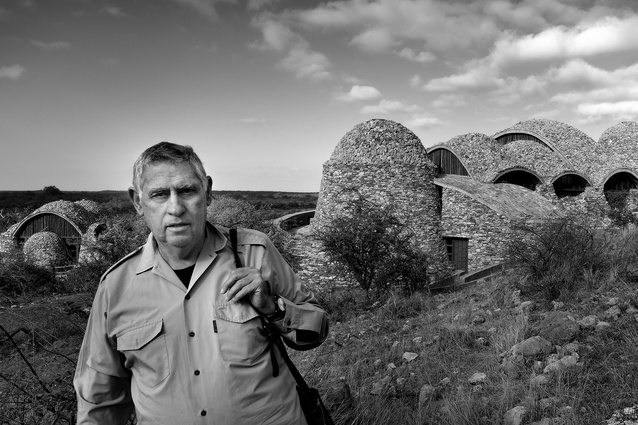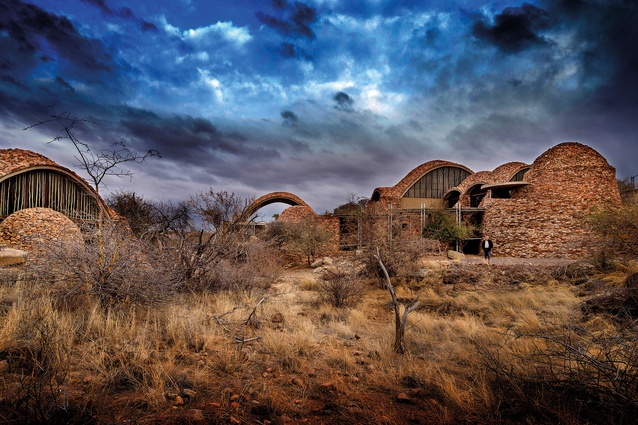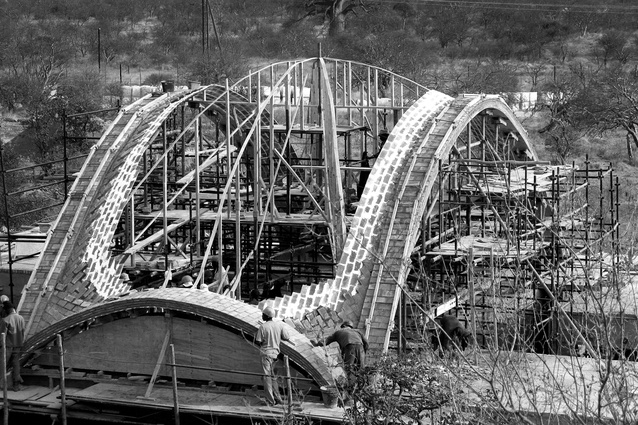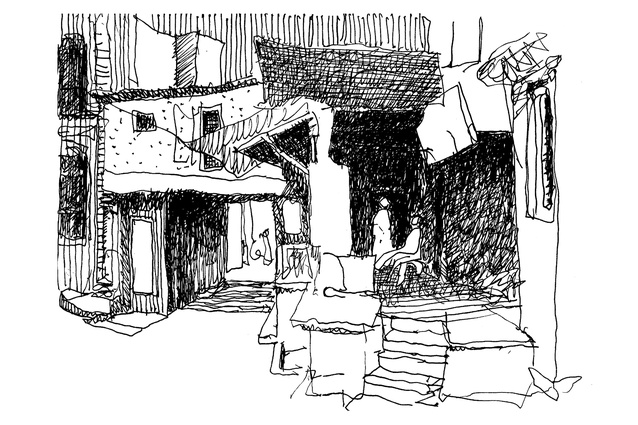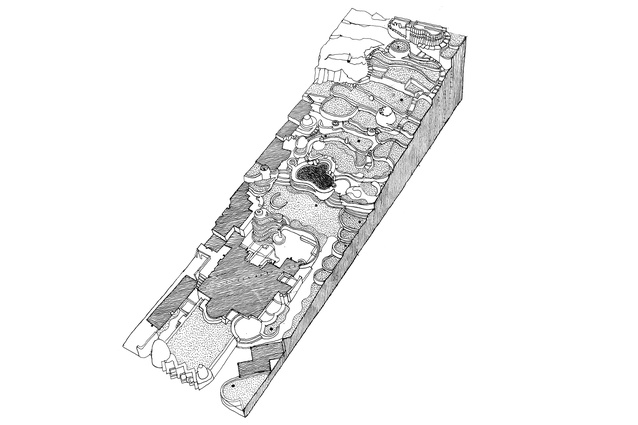Review: The Architecture of Peter Rich
Jeremy Smith reads The Architecture of Peter Rich: Conversations with Africa and finds a conversation we can all learn from.
Architectural champions can quickly become lost in today’s heady imagery. It’s easy to forget that teams of people make architecture and teams need leaders who look, listen and educate. Peter Rich’s buildings have an earthly beauty but are also built on understanding. This book, written by fellow South African Jonathan Noble, is an outward-thinking conversation with Africa and one from which we can learn.

Some may remember Rich in New Zealand from the iGugu lamaNdebele – the pride of the Ndebele exhibition of African Art he brought to the Auckland Art Gallery in 1998. Others, perhaps, from the NZIA 2012 in:situ conference where he was a keynote speaker, fresh from winning World Architecture Festival’s ‘World Building of the Year’. I do, for, having spoken the previous day, I was feet-up listening when Rich announced in his keynote that he wanted to know more and was coming to stay. Curiosity has no bounds; we then met and, a few days later, we were driving around looking at buildings and landscape, having fun and becoming friends. There were stories of Africa, of baobab trees and a land older than time, of elephants moving set-out pegs, and of lions and people. For the architectural lessons weren’t simply about material things; discussions were equally about family and community. What do we have and what might we need? Rich was understanding our architecture through understanding us. He started a conversation.
The book invites you into this highly articulate and personable colloquy of an architectural life now internationally recognisable in extraordinary vaulted earthen forms. It’s full of the how’s and why’s regarding the mastery and rounding of catenary arches and their three-dimensional extension to vaults which have helped propel Rich to such heights. These gravity-defying and purely compressive structures famously inspired architects like Christopher Wren and Antoni Gaudí in previous centuries, and the hands-on commentary traces through historical precedents, contemporary research and even the practicalities of their beguilingly fine timber propping. The development to use “compacted soil tiles, sourced and hand made on site” rather than the stronger fire-baked bricks normal to timbrel construction, was, as Noble asserts, “brave” and “world first”. More importantly, it allowed the process to embed with African landscape and find a source with its remote communities.
Noble’s easy-to-read text cleverly draws the conversation back to its African roots. For, behind the hoops, freedom and inner unity in his work today, Rich is a modernist, trained under the tutelage of Portuguese Mozambique architect Pancho Guedes. Even in this current organicism, he holds a spatial language homed in Africa. We learn of Rich tackling life in apartheid South Africa through research into the architecture of the Ndebele people, and the application of African spatial and socially “analogous space” into his housing and public buildings.
“The best philosophy,” we read, “is the one that comes out of situation”; a mantra that we see in ambitious projects like his own Westridge House and Garden terracing (1982–present), the social bridging of the Alexandra Heritage Centre for Alexandra Township in Johannesburg (2002–2018), the acclaimed Mapungubwe Interpretation Centre (2005–2009) and his Landscape Architecture – Architecture Landscape exhibition at the 2018 Venice Biennale. Throughout, we see an architecture intent on contributing: buildings of a collective that, through alternating patterns of indoor and outdoor space, draw outwards to a greater landscape.
Noble, himself a professor of Architecture at the University of the Free State, shows that behind it all is an educator. Rich held a professorship at the University of Witwatersrand and forwarded a pedagogy which continues to teach students but also communities around the world. The Mapungubwe building is nothing but beautiful, with its flowing vaults and daylighting. It has a processional arrival and circulation paths rooted in the African landscape. But its true value is in its re-establishment of labour-based traditions, the hand-pressing of bricks and the training of a community in the industries and skills of making. Through education, it is timeless. Even out here, amongst lions in the savannah, the conversation is social.
Of course, learning, educating and making takes some doing. To understand, you have to want to understand and not many architects drive forward with such inert curiosity, Lamy pen in hand. Rich’s understanding is drawn and perhaps akin to Pete Bossley in our New Zealand context. The book takes us to South Africa, Uganda, Ethiopia and Rwanda, to India, Mexico, Italy and China, where relationships of what is there and what isn’t, of scale and context, traditions and cultures, are explored through linework. Many of these exquisite drawings are included in the book to illustrate relationships and stimulate discussion; they might also encourage us to keep conversing with a pen or a pencil.
I could quote from many parts of this book but a very simple section early on describes the outward approach. In describing a drawing of a housing cluster in an old part of Ahmedabad, India, Rich notes: “what appealed to me here was the ad hoc nature of the additions, and how the verandah provided a privacy gradient to the street. A humble scene yet one that demonstrates tremendous urban sophistication and, importantly, not architect-designed.” Look at the observation in the drawing (above, top). Now, look at the free edges, gradations and analogous spaces in his buildings. Look at the understanding then, perhaps, take another look to our own buildings and neighbourhoods.
We can all learn from this conversation; there are treasures in here. Nothing like having champions and lions in life.
The Architecture of Peter Rich: Conversations with Africa by Jonathan Noble is available from lundhumphries.com.

